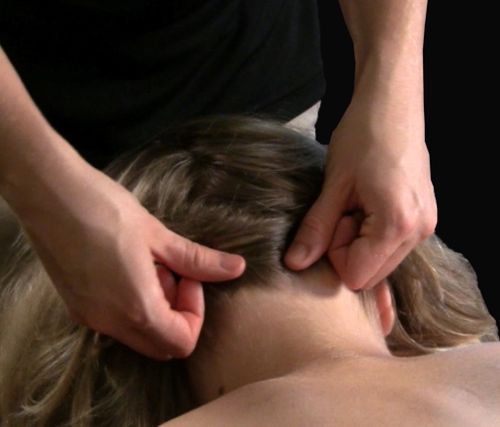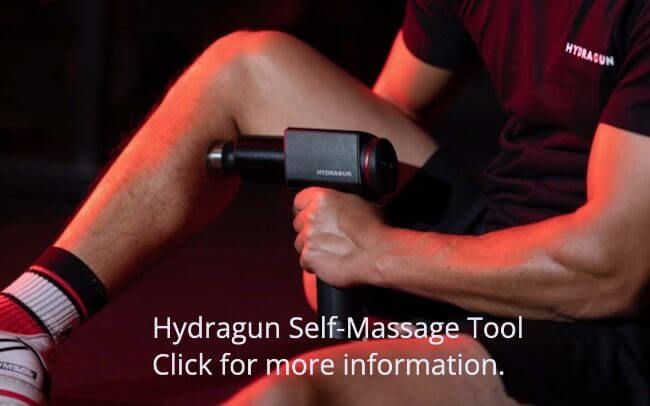- Home
- Benefits of Massage
As an Amazon Associate and affiliate with other programs, I may earn revenue from qualifying purchases through affiliate links. This does not affect the price you pay. Privacy Policy / Disclosures. This site is for educational purposes only.
Benefits of Massage Therapy and When Not to Get a Massage
The benefits of massage therapy include relaxation, better health and well-being (including less pain and supporting faster healing of soft-tissue injuries), and better posture and alignment.
These benefits are so important that Tiffany Field, Ph.D., founder of the University of Miami’s Touch Research Institute, said in an April 6, 1998, Newsweek article that massage can help maintain overall health as much as proper diet and exercise do.
Better Health and Well-Being
The better you feel, the more energy and passion you have to deal with the challenges of life and pursue your interests. Let's look at some of the many ways that massage therapy benefits your health and well-being.
Stress Relief
Massage reverses your body's response to negative stress by creating the relaxation response, which includes reducing heart rate, blood pressure, and breathing rate. Research also suggests that massage reduces levels of stress hormones such as cortisol and adrenaline. Massage can also sharpen your body awareness, so you're more sensitive to early signs of stress and can deal with them before they become major. More ways to deal with stress.
Improved Movement
Massage relaxes tense muscles, helps tissue become more elastic and flexible, and increases joint range of motion, making movement easier in both daily activities and sports and recreational activities. And, because your body is less tense and more flexible, making it better able to adapt to your movements, you're less likely to injure yourself. Another way to improve your movement is with somatic practices.
Less Pain and Faster Soft-Tissue Healing
Massage also helps relieve muscle aches and pains, as well as address chronic pain. A May 2016 meta-analysis looked at 67 studies and concluded the evidence showed that massage therapy, compared to no treatment, has strong support as a pain management option. Targeted massage can also help soft-tissue injuries (such as muscle pulls and strains, ligament sprains, tendonitis, and whiplash) heal faster.
Additional massage therapy benefits include:
- Improving the function of your immune system.
- Helping you sleep better. Sleep deprivation is a major problem and contributes to many accidents, not to mention cloudy thinking.
- Promoting deeper and easier breathing, helping your body get more of the oxygen needed for good health.
- Reducing anxiety, calming your mind, and relaxing you, all of which helps you think and function more clearly.
Relaxation massage is different from massage for dealing with injury, relieving chronic pain, or improving alignment. Know what you want, and choose a massage therapist who offers it.
More Benefits of Massage Therapy
Learn specific benefits of pregnancy massage to soothe some of the challenges of pregnancy, baby massage for happy, healthy infants, and massage for children.
For information about the health benefits of massage therapy for specific conditions:
- Massage for MS may help relieve symptoms of multiple sclerosis.
- Cellulite Massage looks at controversial claims about the the benefits of massage for this condition.
- Massage for Piriformis Syndrome describes this condition and some options for treatment, including massage and tennis ball therapy.
- Treatment for Plantar Fasciitis includes an explanation of this foot condition and a massage routine for the condition.
Learn a little about the history of massage. Or support your massage with a full-body stretching routine or other ways to practice self care.
Massage Technique
With all the different types of massage available, massage technique varies a lot. For example, you have the gliding and kneading strokes of Swedish massage, the stretching of Thai massage, and the direct pressure of shiatsu. Any of these techniques can promote holistic healing.
Here are some techniques on this site, mostly for the non-professional, to get you started.
- Abdominal massage: Health benefits, video and instructions for a Swedish-based abdominal routine, and self massage for constipation.
- For women, learn about the benefits of breast self massage and one way to do it.
- For everyone, here are some shiatsu self massage techniques.
Techniques you can share with a partner:
- Back Massage
- Butt Massage for the gluteal muscles
- Leg and Foot Massage
Massage Isn't Always a Good Idea
Despite many benefits of massage therapy, sometimes massage is inappropriate. Let's look at contraindications (reasons not to receive massage).
Circulatory Contraindications
Many of the contraindications involve the circulatory system, because many massage techniques can affect circulation.
Avoid massage if you have a thrombus, embolism, or anything involving a blood clot. If you have had blood clots in the past and have risk factors for blood clots, tell your therapist, so he/she can make an informed decision about giving you massage. However, be aware that if you have an undiagnosed blood clot, massage can theoretically cause the clot to move and put you in the hospital (or worse).
If you have any condition that involves damaged blood vessels, extra caution is needed. For example, some therapists will not massage anyone with an aneurysm, while others say it depends on the location and type of aneurysm. Even so, receive only light massage only with a doctor’s written OK.
Other conditions that require caution include uncontrolled high blood pressure, uncontrolled diabetes, advanced atherosclerosis, and advanced heart disease.
Infection
Massage may cause infection to spread, including colds and flu. However, when you are past the acute stage of cold or flu, with only a few lingering symptoms, massage is OK, though you may feel a little worse the next day.
Of course, if you have anything contagious, no massage, both to keep it from spreading in your body and to protect your massage therapist.
Changing Views
There's little research about how massage affects some medical conditions. Sometimes massage therapists play it safe to avoid potential problems for you.
Up until almost the end of the 1990s, massaging people with cancer was considered a no-no on the theory that it might cause cancer to spread. However, research has shown that massage doesn't cause cancer to spread and that careful massage has many benefits for cancer patients. Many cancer treatment programs now include massage for stress relief. A good book on the subject is Medicine Hands: Massage Therapy for People with Cancer by Gayle MacDonald, LMT.
Your Responsibility
The important thing for you to do is to give your massage therapist an accurate and complete health history, so that he/she can make an informed decision about giving you massage.
If you want technical and detailed information about the effects of massage and contraindications, see Ruth Werner’s A Massage Therapist's Guide to Pathology.




